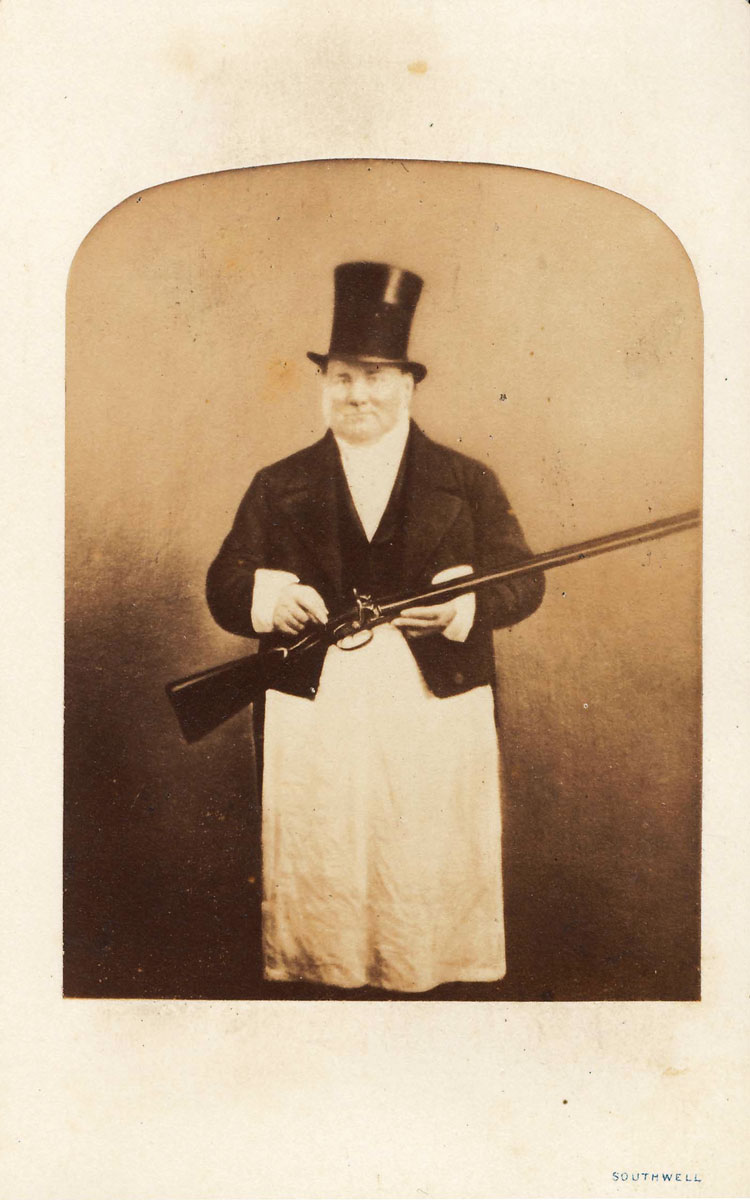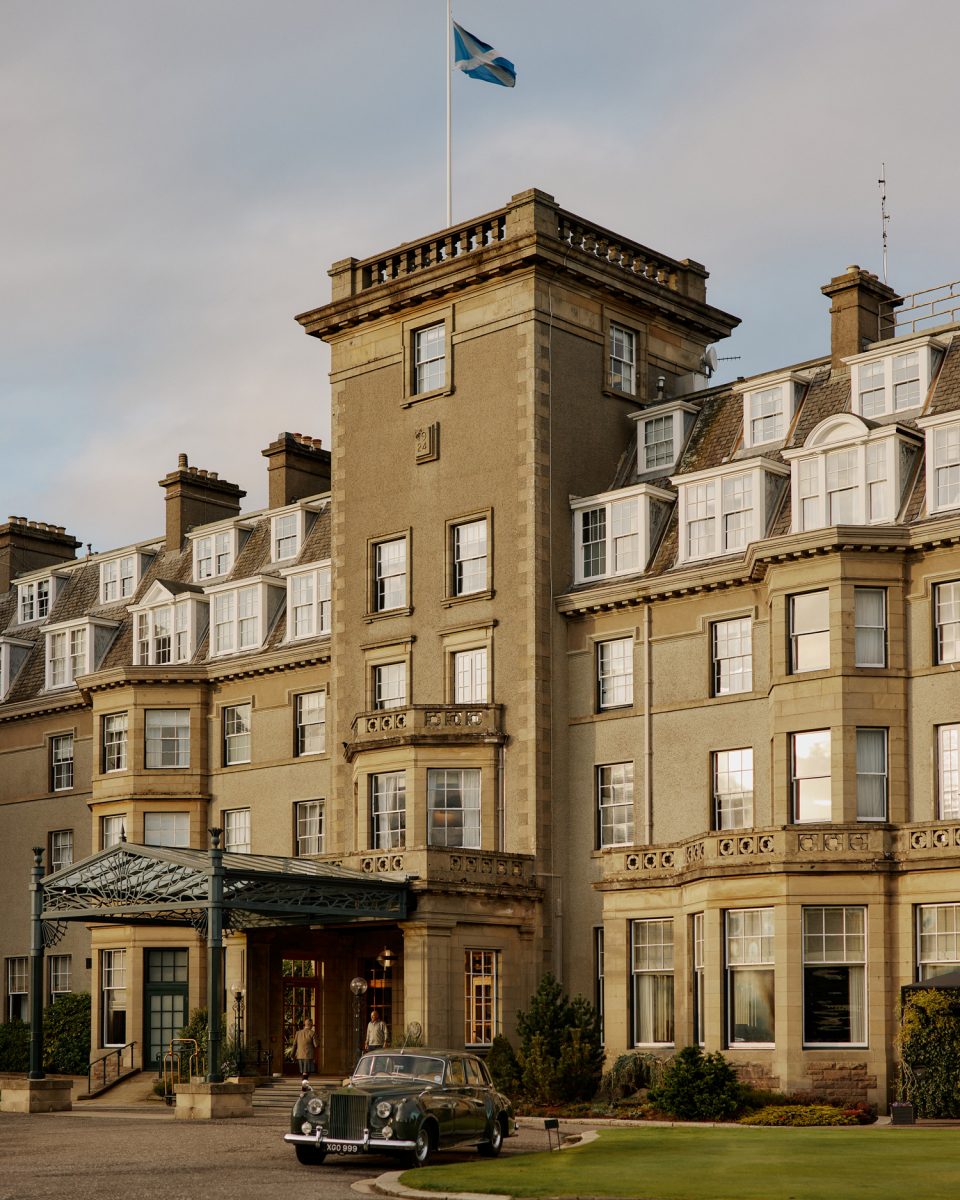Known colloquially as ‘The Bishop of Bond Street’, Mr Bishop was clearly a master salesman who mesmerised the young bucks of Mayfair, organising races, boxing matches or cock fights. As Mr Taylor wrote: “the young bloods, officers, fashionable country squires, in their idle moments could always find a cure for ennui at the Bond Street rendezvous.” These figures obsessed about his foibles and were constantly asking him why he always wore his hat, indoors and out, to which one young nobleman was given the cryptic reply: “because . . no one else’s fits me”. Stiff wagers were lost and won on the chance of catching him without it.2
Mr Teasdale-Buckell gave a striking portrait in words of the experience of encountering ‘The Bishop’ for the first time: “A large and roomy man, old Bishop, sitting in front of the old white mantelpiece …his gouty leg up on a chair before him. Dressed from head to foot in the blackest of black, a huge white frill proceeding from his breast, and an enormous pair of shirt cuffs turned back over his coat sleeves, and a neatly brimmed hat, which no mortal eye had ever seen off his head. A truly right reverend and Episcopal figure, and worthy of the only Bishop who had ever passed an Act through Parliament, as it was his wont to boast concerning the Dog Act, termed Bishop’s Act.”3
This act of public spirit was inspired by the one-time theft of his adored pet dog, Tiny. He was aghast to discover that a man could go to jail for stealing a dog collar but not for stealing a dog, so he threw his weight behind a bill which outlawed the stealing of dogs.4 He put £1,000 of his own money behind it and it was the occasion of the passing of this bill into law in 1845 which led friends to commission the full-length oil portrait of him. When Tiny died, Mr Bishop erected a marble monument with a full inscription on the front of the New Bond Street shop (which is now housed in the Birmingham factory).
Mr Teasdale-Buckell continued: “If you were a stranger calling upon him for the first time, the odds were that he would show no more cognisance of your presence than if you had been in the next parish. After sufficient time had been allowed for this to do its work, the foreman would probably take some opportunity of making the great man informed of your propinquity, when you would be suddenly discovered and greeted with condescending affability.”5 Mr Bishop, a consummate performer, occupied his position of agent and salesman for the company for over fifty years and died in 1871, aged 74. He was also a close friend of Col Peter Hawker, one of the great Regency shots, who was a faithful client of Westley Richards.
A legendary figure across the entire sporting world ( in his own life time ), ‘The Bishop’ remains an essential inspiration to the sales approach of Westley Richards & Co. today. I sees a very close link between the knowledge of our team and the passion for the sport of shooting shared by our sales team, gun makers and clients together.
I am very grateful to Richard Kilby for sharing the photograph of William Bishop which appears at the top of this post. It is the only known photograph of the Bishop and one which evidently the portrait above was painted from.



 Enquire
Enquire
















tim wilkes on February 19, 2015 at 6:59 pm
Thank you Simon. That photograph of the Bishop is wonderful and gives the portrait a new perspective.
Do you think those are dog leads hanging off the counter to the Bishop's right in the portrait? They appear to be continuous loops, which I thought a little starnge.
Tim
Simon Clode on February 21, 2015 at 11:04 am
I am not sure, they are certainly continuous loops, with a quick release on the end. Possibly a dog lead but perhaps something else from that period.
James Grinyer on February 25, 2015 at 6:51 pm
i'm glad the picture of "The Bishop" has been shared in this way. It was with a heavy heart and a little regret, that circumstances saw me having to sell some of my accumulated "treasures" ( that's polite for gunmakers space junk ). Well written article!!! I can still recite the poem about the passing of Tiny - memorised after several patient visits to the Grange road factory aged 14 trying to gain work experience! I really enjoy dipping into the Explora blog from time to time and it was certainly a surprise to see the picture! Keep up the great work! Best regards, James.
Simon Clode on February 25, 2015 at 9:26 pm
I am always the best place to sell "accumulated treasures" related to Westley Richards if you have any left!!
Thanks for the comments.
James Grinyer on February 25, 2015 at 10:46 pm
Thank you Simon, I will bear it in mind. Still have a few bits and pieces, and I can still remember a few that I never successfully bartered for too!!! Are you still open for 'guest posts' ?? - I drafted a couple but never submitted them. Regards, James.
Simon Clode on February 26, 2015 at 12:03 am
Yes guest posts are welcome!
Amy on April 7, 2015 at 3:53 pm
Hi,
What a wonderful article, thank you!
I was wondering if you could share more details about the painting included in this post. Namely the artist, the date it was painted, who it currently belongs to, and any references you have to its painting.
All the best!
Amy.
Simon Clode on April 7, 2015 at 6:17 pm
The painting of William Bishop was by Henry Barraud and painted in 1848. The painting is owned by Holland & Holland and hangs in their gunroom in London, so every visitor there can see it and hopefully think "Westley Richards" rather than Holland & Holland!
My Father sold it to Roger Mitchell when he took over Holland & Holland as MD from Malcolm Lyell in about 1989. It was a move I have always regretted and I think the reason he sold it was because firstly he was unfamiliar with it as it had been at Hollands for so long, (they being our agents in London and it was on loan) and secondly he probably needed the £7000 offered for it.
I have tried many times, both personally and through others, to get it back but to date no luck!
Amy on April 14, 2015 at 3:21 pm
Thank you very much for the extensive information!